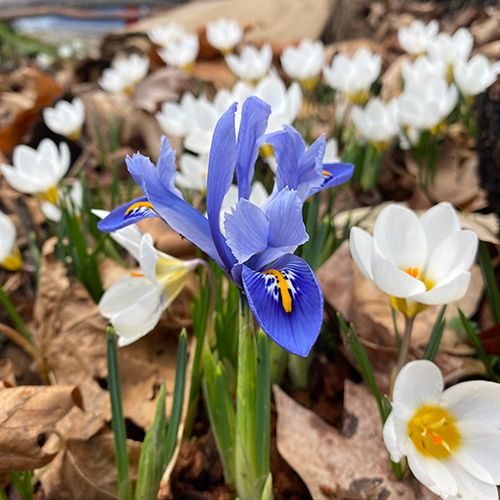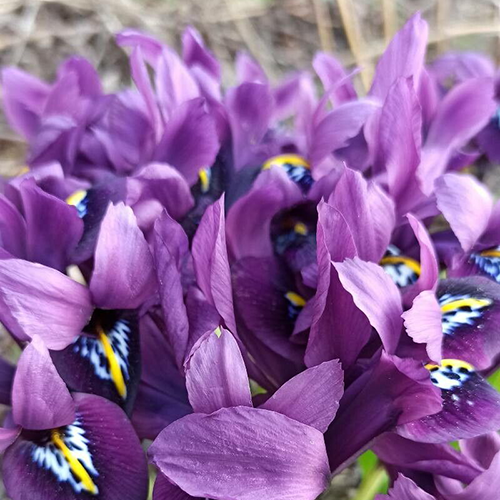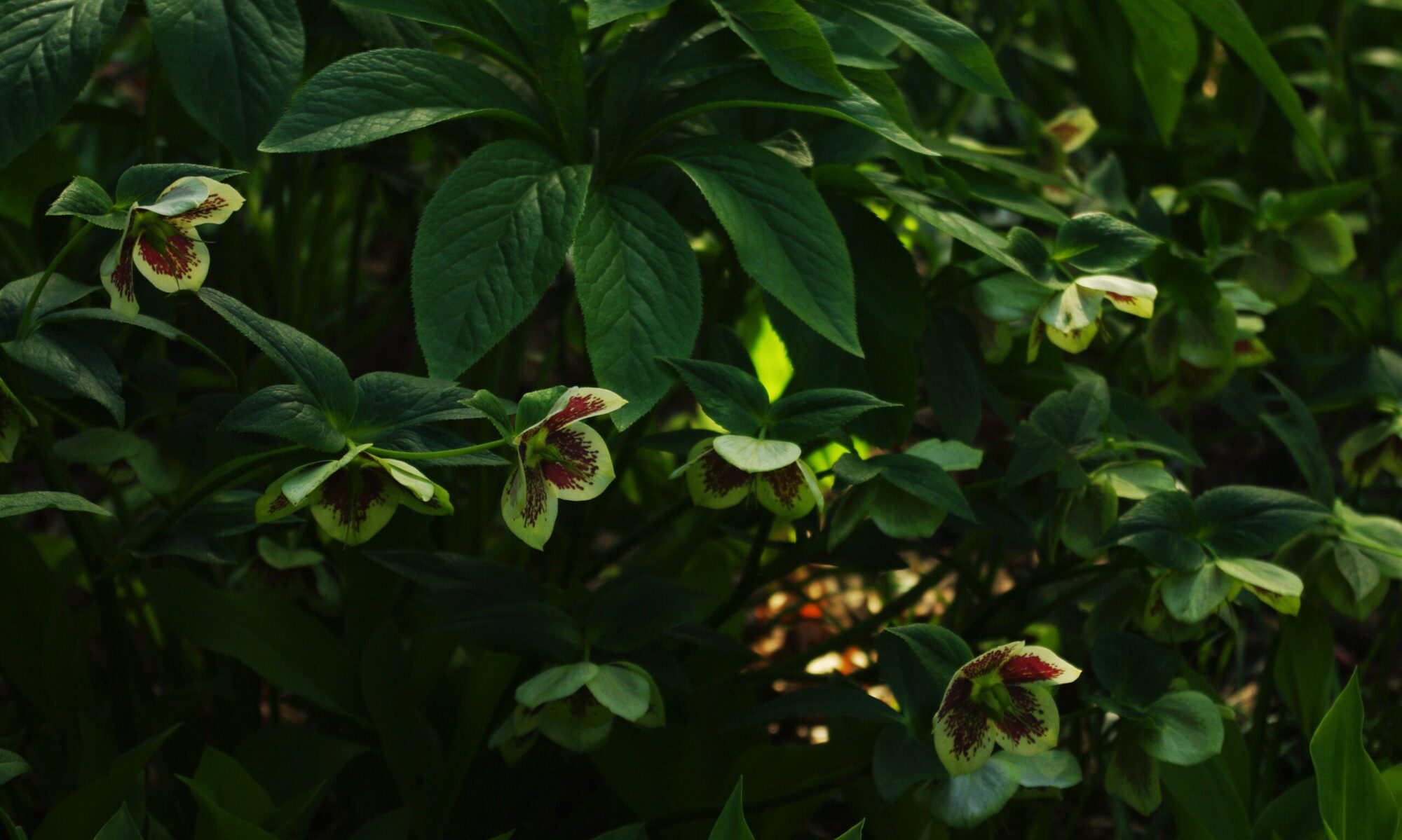
The entire internet and the world of SEO pushes towards making wordy posts that result in a ton of filler and jargon that drives me totally nuts. If you’re looking for the basic details, here they are.
Full/part sun, perennial, rich and well drained soil, hardy to Z5, 3-6″ tall. Naturalizes slowly and if planted shallowly will split into bulblets which will take a few years to get back to blooming size. Plant 3-4″ deep in fall or early spring. Deer resistant, drought tolerant.
Full list of irises we are carrying for this fall

The Dwarf Iris, or Iris reticulata, is gaining popularity year upon year as gardeners start to recognize what a loveable little flower it is. It comes from the Caucasus mountains in Turkey, the birthplace of many bulb species we’ve come to know and love.

Unlike the bearded irises you may be used to seeing, these little guys top out at 8″, and have a sweet fragrance to go with the distinctive orchid-like flower that we love about irises. The Iris reticulata species has won the prestigious RHS Award of Garden Merit for being all-round fantastic plants – reliable, easy to care for, and beautiful. Not only are the dwarf irises the same height (and just as deerproof) as Galanthus (the common snowdrop), and crocuses, they all bloom at the same time, leading to a near-infinite variety of possibilities for combining these gorgeous creatures.

Like all irises, I. reticulata is deer and drought resistant, making it a sensible choice for the long dry summers we’re getting more and more prone to in the Pacific Northwest. They naturalize slowly, and will usually take a year or two off between blooming, so if you want a consistent show, try planting them two or three years in a row to ensure that you always have a set of tubers large enough to bloom each spring.

All of the varieties you see here are ones we’re carrying for the autumn planting season, for which you can place an order (for pickup in Courtenay) here.
Plant these sweethearts 3-4″ deep in fall or early spring and enjoy the show. Remember that (like most spring flowering bulbs) irises do best if you can let them be as dry as possible during the summer months as that is the period in which they go dormant, and they can rot if they’re kept too moist.
